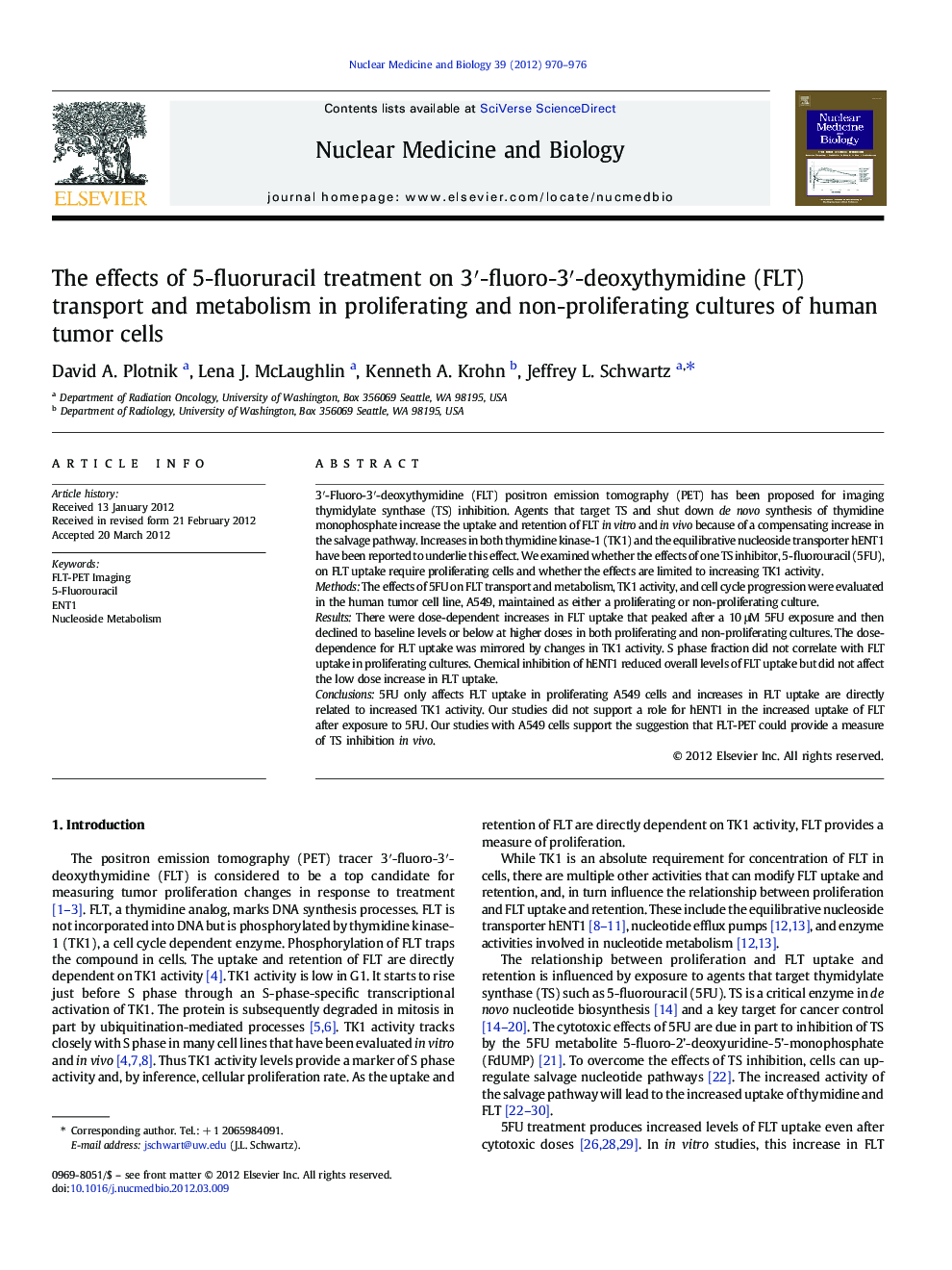| Article ID | Journal | Published Year | Pages | File Type |
|---|---|---|---|---|
| 2153873 | Nuclear Medicine and Biology | 2012 | 7 Pages |
3′-Fluoro-3′-deoxythymidine (FLT) positron emission tomography (PET) has been proposed for imaging thymidylate synthase (TS) inhibition. Agents that target TS and shut down de novo synthesis of thymidine monophosphate increase the uptake and retention of FLT in vitro and in vivo because of a compensating increase in the salvage pathway. Increases in both thymidine kinase-1 (TK1) and the equilibrative nucleoside transporter hENT1 have been reported to underlie this effect. We examined whether the effects of one TS inhibitor, 5-fluorouracil (5FU), on FLT uptake require proliferating cells and whether the effects are limited to increasing TK1 activity.MethodsThe effects of 5FU on FLT transport and metabolism, TK1 activity, and cell cycle progression were evaluated in the human tumor cell line, A549, maintained as either a proliferating or non-proliferating culture.ResultsThere were dose-dependent increases in FLT uptake that peaked after a 10 μM 5FU exposure and then declined to baseline levels or below at higher doses in both proliferating and non-proliferating cultures. The dose-dependence for FLT uptake was mirrored by changes in TK1 activity. S phase fraction did not correlate with FLT uptake in proliferating cultures. Chemical inhibition of hENT1 reduced overall levels of FLT uptake but did not affect the low dose increase in FLT uptake.Conclusions5FU only affects FLT uptake in proliferating A549 cells and increases in FLT uptake are directly related to increased TK1 activity. Our studies did not support a role for hENT1 in the increased uptake of FLT after exposure to 5FU. Our studies with A549 cells support the suggestion that FLT-PET could provide a measure of TS inhibition in vivo.
